Snake plant, also known as Sansevieria, are popular houseplants due to their easy care and striking appearance. But you have begun to notice that your snake plant's leaves are turning yellow, which could indicate an issue that needs to be taken care of as soon as possible.
In this article, we will explore the common reasons why snake plants turn yellow and provide tips on how to fix them. Following these steps can help ensure that your Snake plant stays healthy and vibrant.
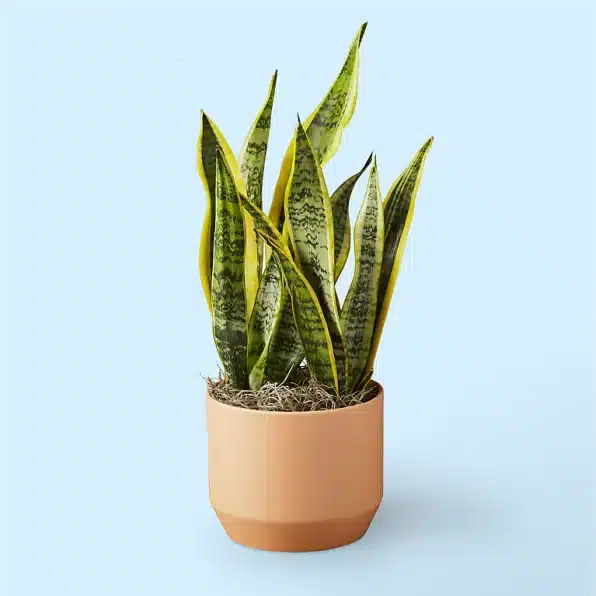
What is a Snake Plant?
Snake plant, also known as Sansevieria, is a genus of perennial evergreen plants that belong to the Asparagaceae family. These plants are native to tropical regions of West Africa, such as Nigeria and the Congo. They have been popular houseplants for centuries due to their striking appearance and low maintenance requirements.

The long, upright leaves of the Snake plant are typically variegated with yellow or white markings, growing up to four feet tall, while the roots are thick and fleshy for holding water. This plant can be an excellent choice for people who often forget to water their plants.
Snake plants thrive in well-draining soil and prefer bright, indirect light, but they can also tolerate low-light conditions. They do not require frequent watering, and it's best to wait until the soil is completely dry before watering again. Snake plants also prefer warmer temperatures and can tolerate humidity, making them an excellent choice for tropical and subtropical climates.
There are several varieties of snake plants, including the Sansevieria trifasciata, commonly known as the “mother-in-law's tongue” plant, and the Sansevieria cylindrica, also known as the “African spear” plant. Other common names for the snake plant include Viper's Bowstring Hemp, Bowstring Hemp, and Magic Sword.
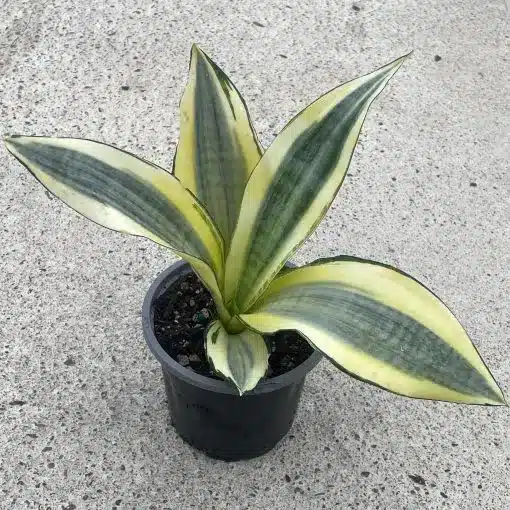
Snake plants are also popular in Feng Shui, the ancient Chinese practice of arranging furniture and objects to promote good energy flow. In Feng Shui, snake plants are believed to have protective qualities that can help purify the air and bring positive energy to a space.
They are often placed in the wealth and health areas of a home or office to promote prosperity and well-being. Additionally, the long, upright leaves of snake plants are thought to resemble swords, which can help protect against negative energy and promote feelings of safety and security.
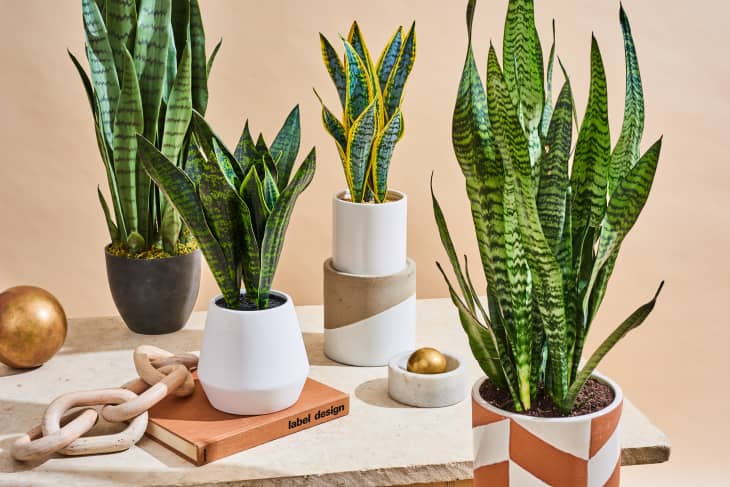
Snake plants are also said to be beneficial for the health of the people who live in the home. They are said to help improve air quality, and they are also said to help reduce stress and anxiety. If you are looking for a plant that can provide both aesthetic and practical benefits, then a snake plant is a great option.
Reasons Your Snake Plant is Turning Yellow
If you notice that your snake plant's leaves are turning yellow, it's important to identify the underlying issue to address it effectively.
Here is a graph that shows the possible causes of yellow leaves on snake plants and their symptoms:
| Cause | Symptoms |
|---|---|
| Overwatering | Yellow leaves, soft and mushy leaves, drooping leaves, brown tips, soft roots, musty odor |
| Underwatering | Yellow leaves that are dry and crispy, brown spots on the leaves |
| Over Fertilizing | Yellow leaves, brown tips, stunted growth |
| Too much direct sunlight | Yellow leaves with brown edges, sunburned leaves |
| Temperature fluctuations | Yellow leaves, wilting leaves, stunted growth |
| Natural aging | Yellow leaves that start at the tips and spread towards the base |
As you can see, there are a number of different things that can cause yellow leaves on snake plants. The symptoms will vary depending on the cause, but in general, yellow leaves are a sign that something is wrong with your plant.
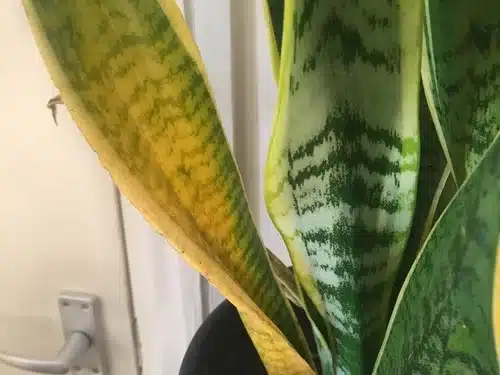
If you notice your snake plant's leaves turning yellow, it's important to take action to identify and address the cause. With proper care, your snake plant should recover and start to produce new leaves.
Reason 1: Overwatering
What it looks like:
Overwatering is a common cause of yellowing in snake plants, and it can lead to a range of symptoms that can affect the leaves and the roots. If you overwater your snake plant, you may notice that the leaves start to turn yellow and brown, especially at the base of the plant. The leaves may also feel soft and mushy to the touch, and start to droop or wilt.
Another sign of overwatering is softness at the base of the plant, which can indicate that the roots are starting to rot due to excess moisture.
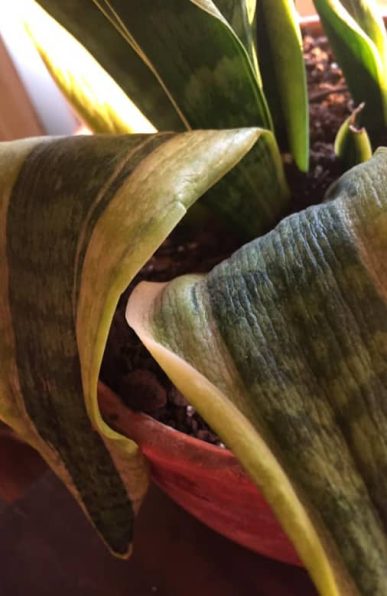
How to fix it:
To fix overwatering, you should start by checking the soil moisture level and if the soil is damp or waterlogged, you should stop watering the plant and allow the soil to dry out completely before watering again. You can also consider repotting your snake plant in fresh, well-draining soil to prevent further root damage.
Reason 2: Underwatering
What it looks like:
Underwatering is another common reason why snake plants can turn yellow, and it can cause the leaves to become dry and brittle. If you notice that your snake plant's leaves are turning yellow and feel dry to the touch, it may be a sign that the plant is not getting enough water.
Other signs of underwatering can include leaves that are curling or crisping at the tips and edges, and the soil may be visibly dry and pulling away from the edges of the pot.
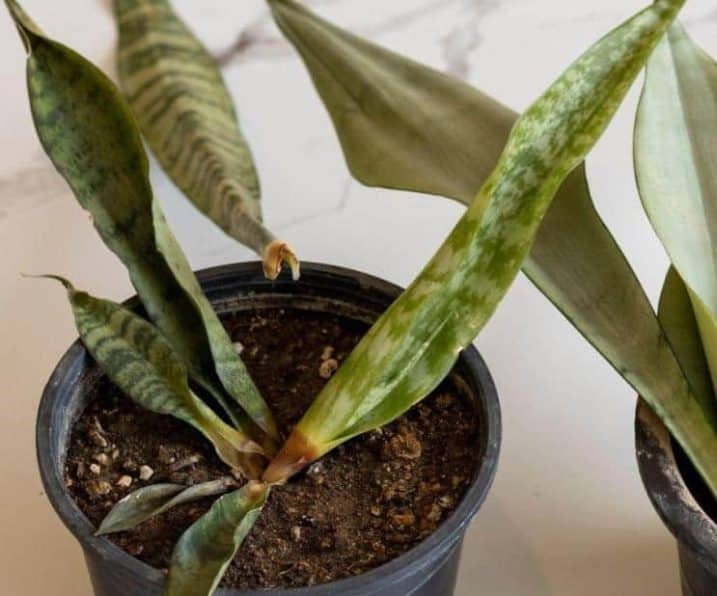
How to fix it:
To fix underwatering, you should start by giving your snake plant a thorough watering and making sure that the soil is moist throughout. You should also check the pot's drainage holes to ensure that water can drain freely and that the roots are not sitting in standing water.
It's important to water your snake plant regularly, but make sure to allow the soil to dry out partially between watering sessions.
Reason 3: Over-fertilizing
What it looks like:
Over-fertilizing leads to the buildup of salts in the soil, which can damage the roots and interfere with nutrient absorption. You could notice that the leaves are yellowing and drying out, and the tips are turning brown.
The plant may start to produce new growth that is weaker and more spindly than usual, and you may notice that the soil has a white crust on the surface, which is a sign of excess salt buildup.
How to fix it:
To fix over-fertilization, you should stop fertilizing your snake plant for a while and give it time to recover. You should also flush the soil with clean water to help leach out any excess salts and restore the pH balance of the soil.
Make sure to use a well-draining soil mix and avoid fertilizing more than once a month during the growing season. Additionally, you can consider using a balanced, slow-release fertilizer to avoid over-fertilizing your plant in the future.
Reason 4: Too much Sun
What it looks like:
Exposure to too much sunlight can also cause the leaves of your snake plant to turn yellow and dry out. If your snake plant is getting too much sun, you may notice that the leaves are turning yellow and crispy, especially on the side of the plant that faces the sun. The leaves may also curl or become distorted, and the plant may start to wilt or droop.

How to fix it:
To fix this issue, you should move your snake plant to a spot where it can receive bright, indirect sunlight. Avoid placing it in direct sunlight, especially during the hottest part of the day, and consider using a sheer curtain or shade cloth to filter the light.
You can also rotate the plant periodically to promote even growth and prevent sun damage. If the leaves have already turned yellow, you may need to trim them off to promote new growth.
Reason 5: Temperature Fluctuations
What it looks like:
Temperature fluctuations can also cause your snake plant to turn yellow, due to its sensitivity to extreme changes in temperature. If your snake plant is exposed to sudden drops or rises in temperature, you may notice that the leaves start to turn yellow and wilt. In extreme cases, the leaves may even fall off the plant.
How to fix it:
To fix this issue, you should move your snake plant to a spot where it can be protected from extreme temperature changes, such as near drafty windows or doors. You should also avoid placing the plant near heating or cooling vents.
If your snake plant has already been exposed to temperature fluctuations, you may need to wait for it to recover on its own. You can help the plant by ensuring that it's getting adequate water and light, and by avoiding any additional stressors that could exacerbate the issue. Over time, the plant should be able to recover and produce new growth.
These plants are super hardy and eventually rebound.
Reason 6: Fungal Disease
What it looks like:
Fungal diseases can also cause your snake plant to turn yellow, especially if the plant is
overwatered. If your snake plant has a fungal disease, you may notice that the leaves are turning yellow and soft, and there may be dark, mushy spots on the leaves or stems. The plant may also start to produce a foul odor, which is a sign of bacterial or fungal rot.

How to fix it:
To fix this issue, you should start by removing any affected leaves or stems from the plant to prevent the spread of the disease. You should also adjust your watering habits to avoid overwatering and ensure that the soil has adequate drainage.
If the fungal infection is severe, you may need to treat the plant with a fungicide, which can be purchased at your local garden center or online. Make sure to follow the instructions on the fungicide carefully and avoid using too much, as this can damage the plant.
Preventing fungal diseases is key to keeping your snake plant healthy. You can do this by avoiding overwatering, ensuring that the soil has good drainage, and providing adequate air circulation around the plant. You can also keep the plant in a well-lit area with low to moderate humidity to prevent the growth of fungal spores.
Reason 7: Natural Aging
What it looks like:
Yellowing of the leaves can also be a natural part of the aging process for your snake plant. As the leaves age, they may turn yellow and eventually brown, and they may start to droop or wilt. This is a normal process for the plant, and it doesn't necessarily mean that there's anything wrong with it.
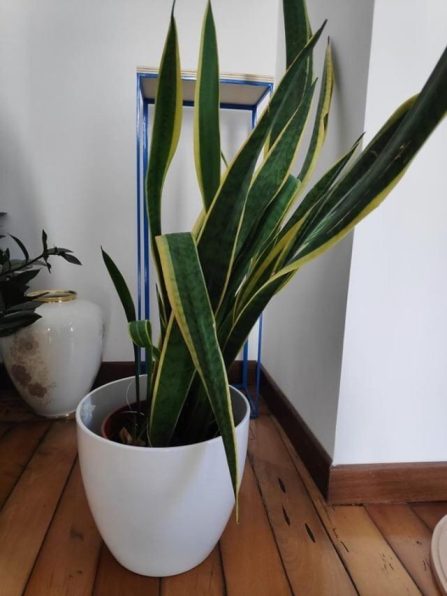
How to fix it:
To fix this issue, you should simply remove the yellowing leaves as they appear. You can also promote new growth by regularly repotting your snake plant and providing it with adequate water and light. As long as the plant is otherwise healthy, there's no need to worry about yellowing due to natural aging.
It's important to remember that snake plants are long-lived plants that can survive for many years with proper care. If you notice that your plant is consistently producing yellowing leaves, it's possible that there's an underlying issue that needs to be addressed, such as overwatering or too much sun exposure.
Tips for Repotting a Yellowing Snake Plant
Repotting a yellowing snake plant can be a great way to improve its overall health and encourage new growth. Here are some tips to keep in mind when repotting a snake plant that is turning yellow:
- Choose the right pot: When repotting your snake plant, choose a pot that is slightly larger than the current pot, but not too large. A pot that is too large can hold too much water and lead to overwatering, which can exacerbate yellowing.
- Use the right soil: Snake plants prefer well-draining soil that is rich in organic matter. When repotting, choose a soil mix that is specifically formulated for snake plants, or make your own by mixing potting soil with sand or perlite.
- Gently remove the plant from its current pot
- Add fresh soil to the new pot
- Repot the plant
- Water the plant
- Provide the right environment
By following these tips, you can help to improve the health of your yellowing snake plant and encourage new growth.
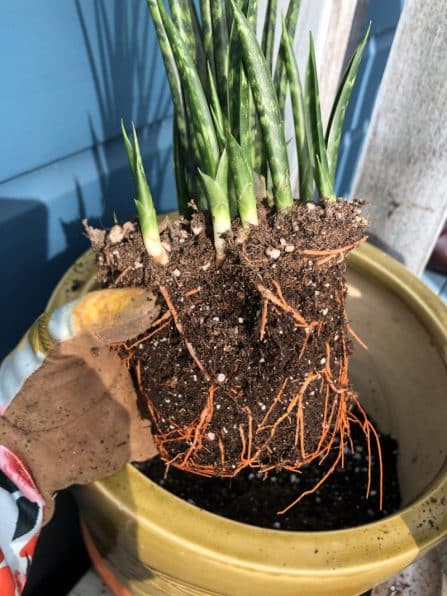
In Conclusion
In conclusion, there are several reasons why the leaves of a snake plant may turn yellow. Overwatering, underwatering, over-fertilizing, too much sun exposure, temperature fluctuations, fungal diseases, and natural aging are all factors that can contribute to yellowing leaves. Recognizing the specific symptoms of each issue is important in determining the cause of yellowing in your snake plant.
FAQ’s
Can yellow snake plant leaves turn green again?
There are several reasons for your Snake plant leaves turning yellow and the sooner your remedy the problem the better, but unfortunately the yellow leaves will not turn green again.
What does an overwatered Snake plant look like?
An overwatered Snake plant will begin to get mushy and droopy from too much water and the leaves will bend.
How often should you water a Snake plant?
You should water your Snake plant every two weeks during the warmer seasons and once a month during the winter months
Should yellow leaves be removed from Snake plants?
Once you have remedied the problem that causes the leaves to yellow, then it’s best to remove them to direct the growth to new healthy leaves.





No Comments